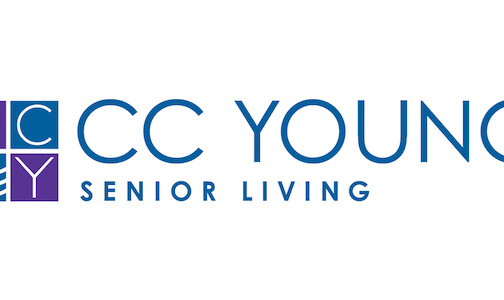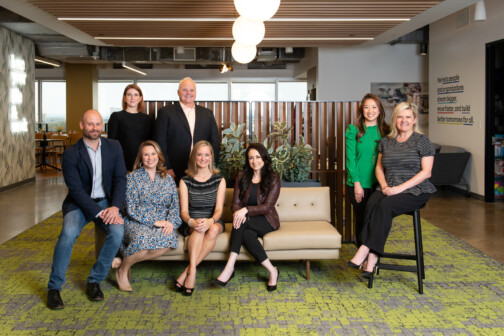From December 2023

Presented by

The welcome transformation of retirement living continues, and examples of this new and improved way to live life during your senior years can be found in sought-after communities throughout Dallas. The demand for luxury living is high, so it’s never too early to start planning and touring to explore everything offered—from cocktail hours and pickleball games to continuing education and daily chef-crafted meals.
On the long list of things to check off in life, enjoying a nice retirement is usually at the top. What far too often keeps getting pushed to the bottom of the list is saving money to fund this goal.
At the beginning of one’s career, retirement seems so far away that it’s difficult to envision, which means big-ticket items often take priority over saving for retirement—paying off student loans, weddings, traveling, buying a home, and building the kids’ college funds among them. Those in good health who have managed to plan and save for retirement in between life’s milestones have a good shot at the opportunity to design and enjoy their retirement exactly as they wish. For those who are behind, it’s never too late to start saving, but financial planners advise to begin today. There is much to love about today’s retirement living options, making it even more imperative to work with a financial planner and remain committed to a plan so that retirement is something to look forward to—not to fear.
“By the year 2034, the U.S. census projects that older adults will outnumber children for the first time in our history—that’s a significant transition,” says Russell Crews, president and CEO of Dallas’ CC Young senior living community. “And from 2024 to 2039, the population in the U.S. of those age 75 and older will increase from 20 million to 45 million. These demographics are almost overwhelming to consider. Right now, there are some Baby Boomers at CC Young, but within the next 15 years, the majority will be in this group. One of the biggest challenges for them will be affordability. No one has the answer, but the message is that you can’t start planning too soon.”
“All roads lead back to planning. We plan for college, weddings, and buying a home. Planning for retirement is just as important.”
Russell Crews, CC Young
Inflation and continuing discussions about a looming recession have upended the economy, leaving those who are newly retired and soon-to-retire panicked about the losses in their portfolios–the savings that will fund this life of fun and freedom. Those who are 10 to 15 years away from retirement are also impacted, as there is little time to make up for the losses. A resetting is taking place and as older adults are coming to terms with how much they will need to fund their goals.
“Retirement living is only going to get more expensive through the years,” Crews says. “Inflation has created chaos in rates that are needed to support the operations of senior living communities. Historically, most communities have had standard 3% to 4% increases, but we have been seeing 6% to even 15%. When seniors look at that and do the compounding, it’s easy for them to become distraught. Sadly, inflation has wreaked havoc on senior living cost structures.”
Of course, funding retirement is only one aspect of long-term planning. Taking the time to reflect on what you want for yourself in retirement is also critical. Staying healthy, active, and engaged with friends and family as well as making the time to pursue interests is just as important as saving money in preparation for retirement so the change in routine isn’t such a shock. Financial advisors recommend examining assets and liabilities. Think about downsizing. Tackle debts and limit liabilities, such as financially supporting older children. Work with a financial planner about options for saving, including weighing the pros and cons of purchasing long-term care insurance. Also consider what you can realistically afford after you stop working and try to mimic living that lifestyle now as much as possible to become adjusted to it.
“Some care expenses can potentially be offset through personal savings, private insurance policies, or government initiative, such as Medicare, Medicaid, and benefits for veterans,” says Chad Hubbard, executive director with the Preston of the Park Cities, a Watermark community. “For those planning for the future, I recommended starting a dedicated savings plan early and exploring long-term care insurance. It’s essential to work with a financial advisor to create a solid financial plan tailored to your unique needs.”
Jen Grant, a Certified Financial Planner™ with Perryman Financial Advisory, says many of her clients start becoming more focused on retirement savings once their kids have graduated from college and live on their own. An official empty nest is the signal to think about the next stage of life—retirement.
“There is a stage of life where you aren’t ready to retire and still enjoy working, but you are also aware that retirement isn’t far off,” Grant says. “I always tell my clients to really focus on their careers at this point. These are likely the highest income-earning years. Maybe you haven’t taken a promotion or moved for a better job because you didn’t want the changes to affect your kids. With this is no longer an issue, it’s time to step up.”
Here, Grant shares her top tips on retirement planning and saving while you are still working.
Reevaluate your career. “If you aren’t happy where you are now with your job, find something else where you can really dig in and enjoy your work and make—and save—as much money as you can as you prepare for retirement. These should be your high-income years, so be strategic about your plans.”
Play catch up. “With most employer-sponsored retirement savings accounts, such as a 401-K, this is likely the time you can make catch-up contributions or invest more from your pay. Take every opportunity you can to increase contributions.”
Pay off debt. “This is major, especially if you have co-signed on student loans. Make sure the kids are ready to launch and take over their own student loans. Take your kids off your health insurance, car insurance, and cell phone plans—even Netflix subscriptions and Amazon Prime accounts. It all adds up, and there are a lot of areas where you may not realize how much you are paying to support someone else’s lifestyle.”
Live on one salary. “If you are in a household with two working people, try to live on one person’s salary and sock away that second person’s salary. It’s a great feeling if you can manage it. If possible, divert that money into a retirement savings account so you aren’t always fighting with your own personal desire for things once you have a relief point.”
It’s never too late. “Having something saved for retirement is better than nothing at all. If you are still 10 to 15 years away from retirement, it’s time to make some big adjustments. It’s easier to spread investments out over a decade rather than a few years. If you wait, you’ll have fewer options. The next couple of years will feel tighter than they have in the last 20 or so, but having plan now will make life easier for everyone when you are no longer working.”
The Choice Is Yours
Today’s retirement communities offer everything you need and want.
The primary reasons senior living communities throughout the Dallas area are undergoing change are savvy developers and consumer demand. Today’s seniors who are transitioning from their long-time homes to retirement communities want their move to feel like a lifestyle upgrade—something that mimics the resorts where they have been vacationing during the past decade or so. They want to continue with their lives as usual—but without the hassles of home ownership. When weekly happy hours, on-site spa services, front-door meal deliveries, and planned trips and excursions are part of the deal, they know they are home.
Senior living community developers often own or manage 20 or more communities. They are committed to keeping up with emerging trends and thinking ahead so that residents can always take advantage of the latest amenities and services. On-site medical clinics, golf simulators, upscale salons that rival what you’ll find in Uptown Dallas, movie theatres, multiple libraries, and on-site banks—today’s senior living perks make it easy for residents to enjoy the best of everything right at home. “There is a lot of brain power at work, and developers are constantly thinking about what’s next,” says John Falldine, executive director of Edgemere. “In this industry, there will always be new things coming to the market, and developers and managers listen to and incorporate what their customers want.”
Approximately 53 million people in the United States are age 65 or older, according to the U.S. Census Bureau. By 2060, this demographic is projected to double in size, meaning that within the next several decades, one in five people will be senior citizens making decisions about where, and how, they want to retire. The next question is when to retire? If savings goals have been met, how do you know when it’s time to make the move? Hubbard says this decision always varies from person to person. Moving to a retirement community before your physical and mental abilities require you to do so is often the smartest choice.
“It makes the transition easier,” Hubbard says. “If you find it challenging to access services or activities that enhance your quality of life, it may be time to consider a move to a community where those amenities are very accessible through assisted living or memory care. Common fears about moving to a retirement community often involve the loss of independence and the unknown. Many seniors worry about leaving their homes and familiar surroundings. However, many are often surprised to discover they gain a newfound sense of independence, social connections, and a vibrant lifestyle due to the emphasis on social connection and community living.”
Once seniors become more open to the idea of moving to a retirement community, they’ll do so with one caveat—the senior living community they choose can’t resemble where their grandparents and parents spent their senior years.
The Preston of the Park Cities, a Watermark community, offers a vibrant lifestyle with resort-style amenities that aren’t too far off from those of a luxury hotel—gourmet dining options and fitness and wellness programs among them. A concierge medical partnership offering access to in-house physicians and medical treatments, Watermark University for continuing education, multiple dining venues, and high-tech programs like EngageVR that offers the opportunity to explore the world—and outer space—right from the community are other perks members enjoy. Within most Watermark communities, residents use a key fob for entrance into and throughout the community, and the fob is what they use to charge meals or even order a cocktail in the lounge. Watermark University, or WU, addresses three circles of wellness—Mind: Growth, Creativity, Curiosity; Body: Motion, Health, Nutrition; Spirit: Peace, Insight, Wisdom; and Community, Connection, Purpose, Legacy. Students can take classes ranging from guitar lessons and music theory to gardening and tai chi at WU.
“Communities are devoting square footage to incorporate more opportunities for overall wellness—not just physical fitness. There is a move toward more holistic care.”
John Falldine, Edgemere
Highland Springs, an Erickson senior living community in North Dallas, recently opened a new clubhouse, a new residential building, and its eighth restaurant on campus so that residents have even more options for living, dining, and entertainment. With three fitness centers, an events space, and a long list of activities—including the resident-requested pickleball and an updated woodworking shop—there is always something going on and plenty of activities to join.
“The customer for any senior living community today is very different from the customer a decade ago,” says Christina Christie, director of sales for Highland Springs. “There is a huge emphasis on wellness in our community and we have been proactive in offering opportunities for folks to stay physically active and mentally sharp—everything from outdoor yoga to disc golf. We also recently opened our labyrinth—a space for residents to take time to reflect and meditate. We want our residents to know that this community can be anything they want it to be, as the majority of our programs are resident driven.”
By the end of 2023, Anthology of Highland Park will be welcoming to residents to its 11-story boutique community that offers a range of care, including independent living, assisted living, and memory care—plus an on-site, upscale restaurant that is also open to the public. Homes are designed to mimic what residents are accustomed to—just downsized for an easier lifestyle. Some units offer two bedrooms, and every unit includes a kitchenette and washer and dryer—perks not often in found assisted living communities. “We refer to the community as an assisted living community because residents can live here and be totally independent and not need any assistance yet, but may need assistance in the future, giving them the ability to stay in their apartment,” says Sherye Groebe, director of sales and marketing for Anthology of Highland Park. “Having a kitchen and a washer and dryer helps them keep the independence they are used to. There are also one-bedroom and studio units to meet a variety of needs.”
Crews attributes the spike in demand for more senior living options to seniors wanting more socialization and an easier, stress-free lifestyle. “I think in the next five or so years, the ability to tour around North Texas and take your pick of senior living communities may not be as simple as it’s always been; options are limited as we get into these exploding demographics,” he says. “It’s very important during the early planning process to make sure the senior living community you choose suits your lifestyle and has a culture that supports your values. People tend to think a retirement community is where you just fade away—that’s definitely not what happens here.”
CC Young Senior Living has made it a priority to listen to what their residents truly want to experience, and this includes sophisticated dining options, a full array of life enriching and engaging activities at all levels of care, and new additions to the offerings such as technology and language classes, technology throughout the campus and on-campus technology support. CC Young also offers continuing education classes through the OLLI program at UNT as well as enrichment programming. The Point & Pavilion, CC Young’s 20,000-square-foot enrichment center, serves thousands of visitors each month—residents and non-residents—who participate in all the programs. The Point includes an art gallery, a meditation area, café, and more. Seven dining venues, a dedicated move in coordinator, a fitness center, and massage therapy are only a few of the offerings at CC Young.
Edgemere recently transitioned from a large entrance fee a to a one-time community fee and monthly rental fee that covers all maintenance, dining, and base utilities. Falldine says Edgemere has incorporated all the latest trends in senior living, including the addition of a more casual café for residents who want an alternative to formal dining and will soon have an on-site medical clinic and expanded sundry store that also offers Italian desserts and coffees. Overall wellness is a focus at Edgemere—social, physical, intellectual, and spiritual. “One of the most dangerous things for seniors living at home is isolation,” Falldine says. At Edgemere, as well as at other senior living communities, residents have much opportunity to stay busy and socialize. Residents are embracing those opportunities and are thriving.”

Shopping Around
The first step to finding a retirement home is knowing which type of care you need.
Continuing Care Retirement Community (CCRC). This is a community that provides all levels of care, including independent living, assisted living, memory care, and healthcare or nursing care (sometimes called skilled nursing) in one community.
Independent Living. This is often a choice for those who are active, independent, and don’t need any type of health or daily living assistance. Residents typically live in apartments and create their own schedules.
Assisted Living. This type of community provides housing options for seniors who may need assistance with daily living tasks, such as dressing, bathing, medications, meals, and activities. Fees vary depending on the level of assistance required. Care can be increased or decreased as needed.
Residential Care Home/Group Home. These are private homes that serve residents who live together and receive care from live-in caretakers. Assistance with daily activities is typically provided, and care is customized to each resident’s needs. Because the resident-to-staff ratio is low, residents get more one-on-one, personalized care.
Memory Care/Alzheimer’s Care. These are secure communities that offer 24-hour support with a specifically trained staff that specializes in caring for patients with dementia or other types of loss of memory or Alzheimer’s disease. Structured activities and assistance with meals and healthcare and daily tasks are provided. Most communities have private pay and costs vary per month depending on the level of assistance required. Medication management and 24-hour monitoring by licensed nurses and caregivers are typically included in the price.
Nursing Care/Skilled Care/Long-Term Care. Nursing care is typically designed for someone who requires a high level of care for a short period of time, such as recovering from a hospital stay or therapy services. Long-term care is for residents who need a high level of care with complex medical conditions who require a licensed nurse for a long period of time. Both levels offer aroundthe-clock care, meals, activities, and rehabilitative service under one roof.

Resource Guide
ANTHOLOGY OF HIGHLAND PARK
anthologyseniorliving.com
CC YOUNG SENIOR LIVING
ccyoung.org
CORIENT
corient.com
EDGEMERE
edgemeredallas.com
FOREFRONT LIVING
forefrontliving.org
HIGHLAND SPRINGS BY ERICKSON SENIOR LIVING
ericksonseniorliving.com/highland-springs
PERRYMAN FINANCIAL ADVISORY, INC.
billperryman.com
WATERMARK COMMUNITIES
watermarkcommunities.com








